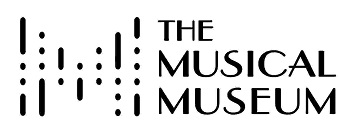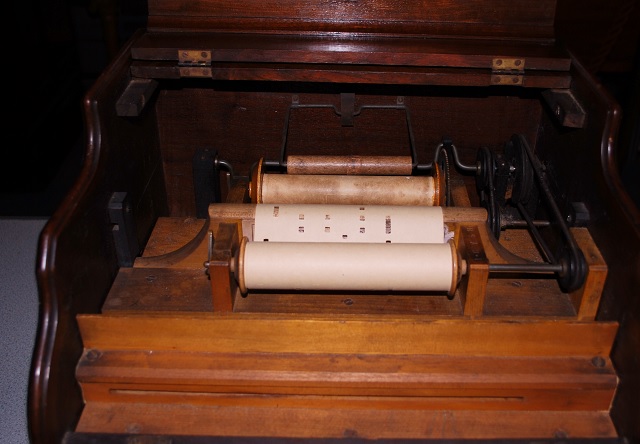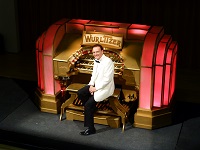The Musical Museum Appears on BBC's Bargain Hunt
Chairman offers expert advice on the popular show

Brentford's Musical Museum is about to feature on hugely popular TV show, BBC Bargain Hunt.
On the programme, Teams Blue and Red spend an hour at an antiques fair with a budget of £300, looking for bargains to sell at auction for a healthy profit. Museum Chairman Michael Ryder was asked to provide his expert advice at Kingston Antiques Centre. Filmed in the Autumn, the programme is being shown at 12.15 on Monday 13 February 2017.
Michael spoke to programme presenter Natasha Raskin Sharp about three distinctive musical instruments, specially selected from the museum’s world-renowned collection of self-playing instruments for this particular episode, sharing with the audience the fascinating early development of automatic musical instruments. The Nicole Frère cylinder musical box, the earliest, developed into the Britannia Disc type musical box. The Celestina paper roll reed organ, the last of the chosen three, is generally regarded as the forerunner of the player piano.
Michael Ryder, Chairman of The Musical Museum said: "The Musical Museum has often been featured on television, but the thrill of being interviewed in front of the camera never lessens. I hope this programme gives audiences, both local and national, a small taste of the treasure trove of many more (and bigger) magical musical instruments awaiting their discovery at The Musical Museum itself. "
The objects selected for the programme were:

The Nicole Frère musical box
This is a very early example (c.1870) of a cylinder music box driven by a key wound clockwork motor. It belonged to a lady from Wembley who had had it since childhood when she had never “as a girl” been allowed to wind it up. It arrived at the museum in 1994 with its winding key and a tiny key used for locking the box still in the box. Made of ‘pearwood’ and clearly plain finished, it originally cost £3-4 guineas so would definitely only have been affordable by a middle class home. It plays four tunes, of which ‘In the days when we went out’ was selected for the filming. Once the four tunes were pinned on the barrel, they were there for the life of the instrument. Today you can hear the music exactly as it was when first purchased nearly 150 years ago.
 Britannia musical box
Britannia musical box
Metal discs of a variety of sizes and sophistication soon started to be used, mainly to encourage after sales purchases. Made in Switzerland by B H Abrahams and sold in the UK through music shops, the Britannia is a prime example of a Disc type musical box. It was acquired by the museum in 1964
but no little is otherwise known. Originally it would have had two wooden doors and a wooden pediment (now lost). The current replacements made by a volunteer using some poor quality photographs as a guide, give a feel for what it might have looked like originally. A frail original disc used to accompany it but thanks to a firm in Chichester that started manufacturing new discs for this size of musical box, the museum was able to acquire some 10 more so that the instrument can be demonstrated today. A popular 1914-18 war song, ‘Goodbye Dolly Grey’ was selected for the filming.

Celestina
Made around 1880 in USA, the Celestina demonstrates the first use of perforated paper music rolls to play instruments. The paper music roll gradually took over and became the most popular carrier of music. They were easy to produce in large numbers. Popular tunes of the day were produced so that they could be collected as new tunes came out, and they did not have the same time constraints as the cylinder or disc i.e. one revolution was the length of the tune. It was operated by turning a handle which moves the roll and works the bellows. As a hole in the paper exposes a hole in the tracker bar and air is sucked across the reed, it sounds. Aeolian Corp. who made it developed international standing, including a large factory at Hayes, Middlesex, not far from the Museum. Although more modern tunes have been cut for these instruments, the Museum enjoys playing the originals. That way, visitors may appreciate the sounds as they were heard in the parlours of homes in the 1880-1900s.
February 9, 2017
Related links
|

 020 8560 8108
020 8560 8108